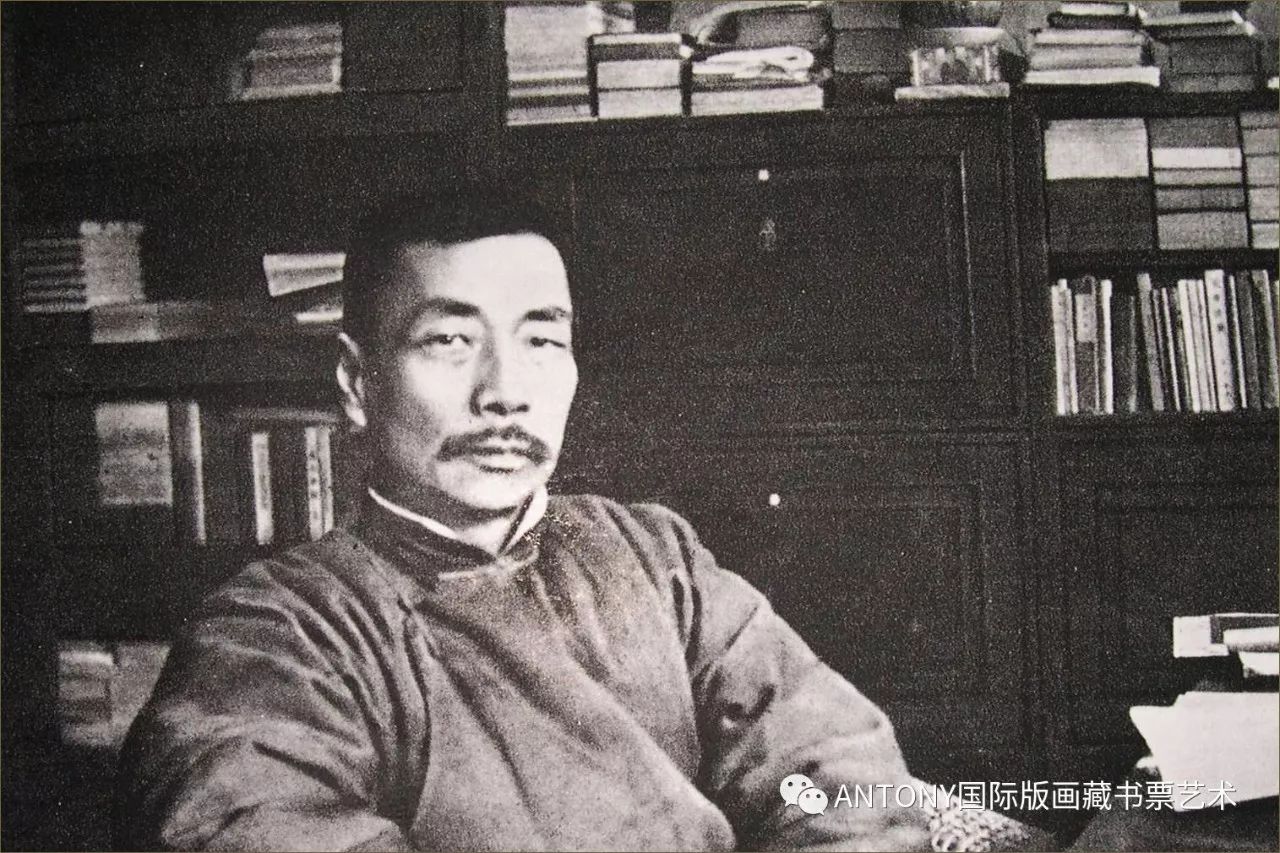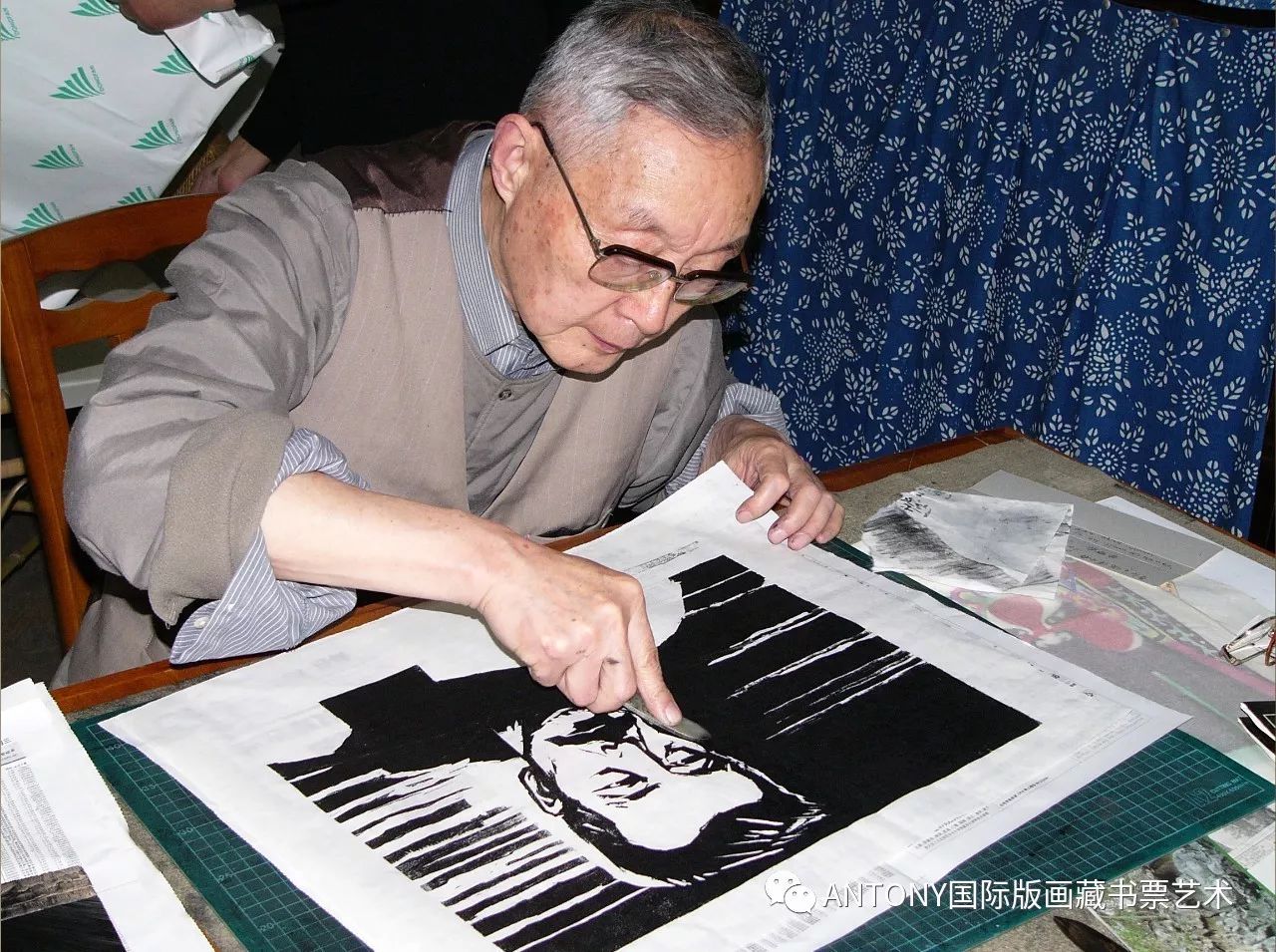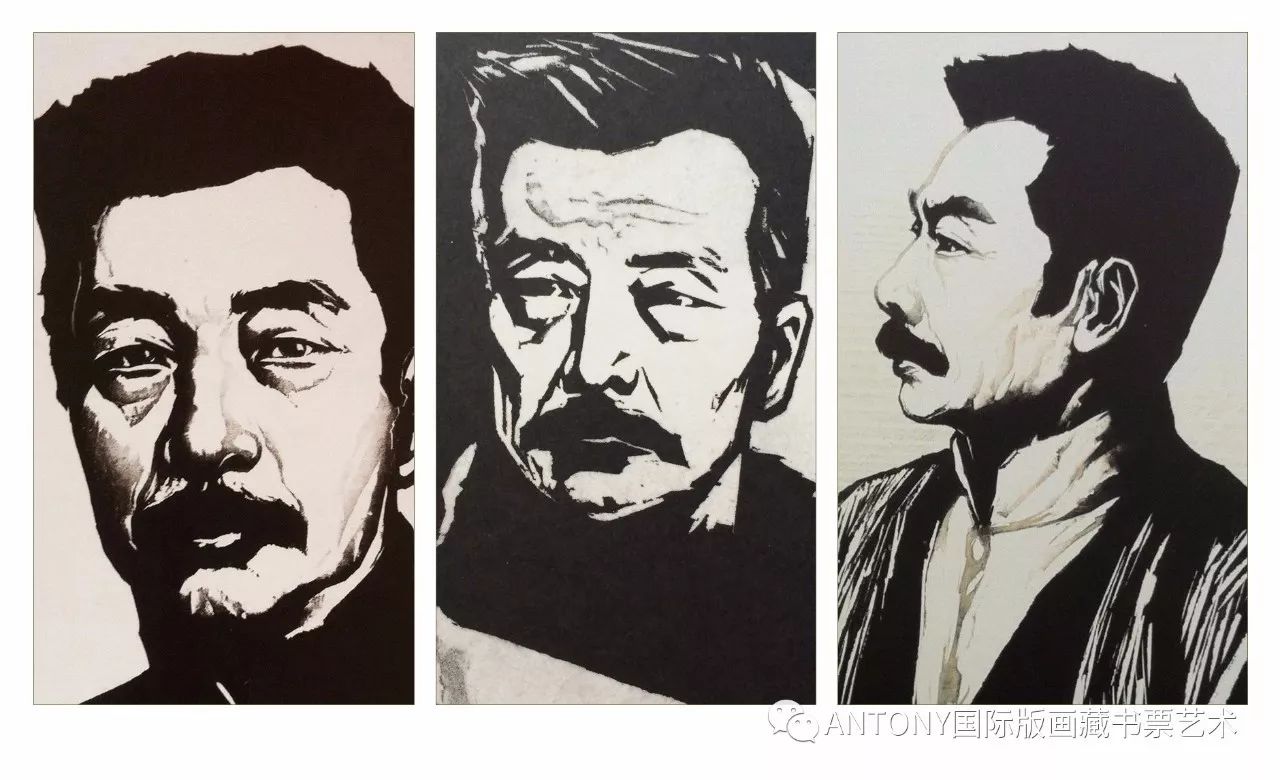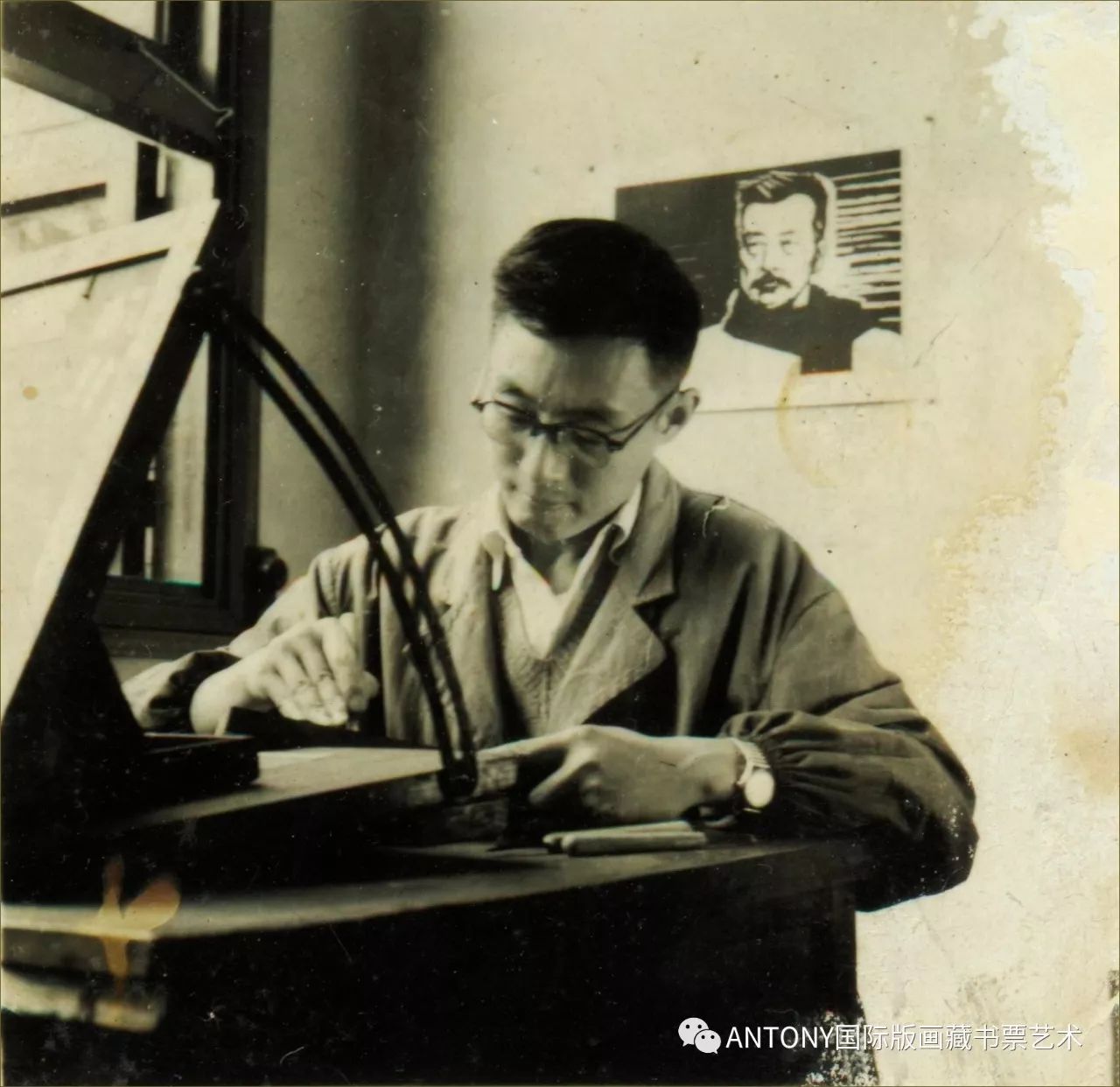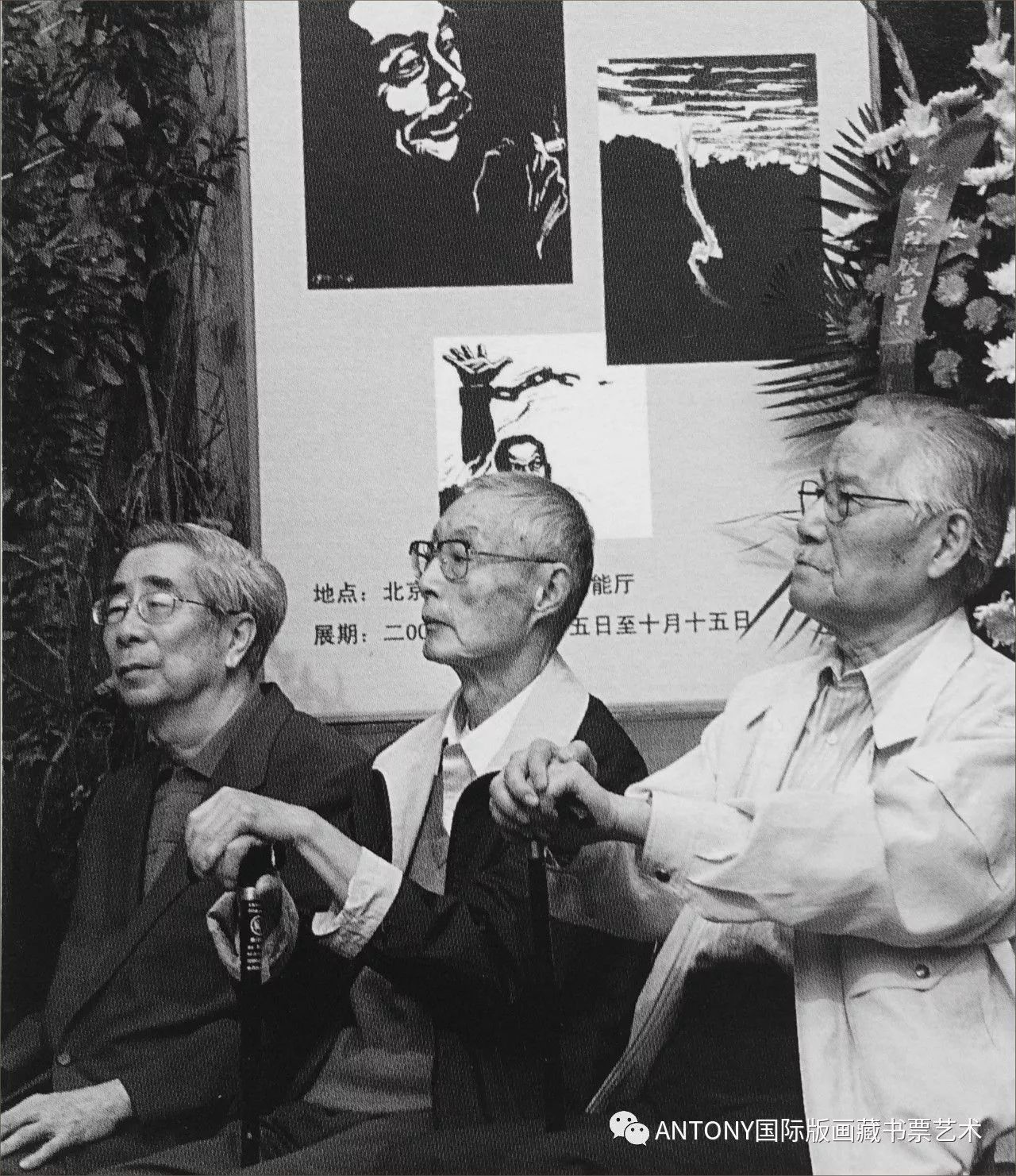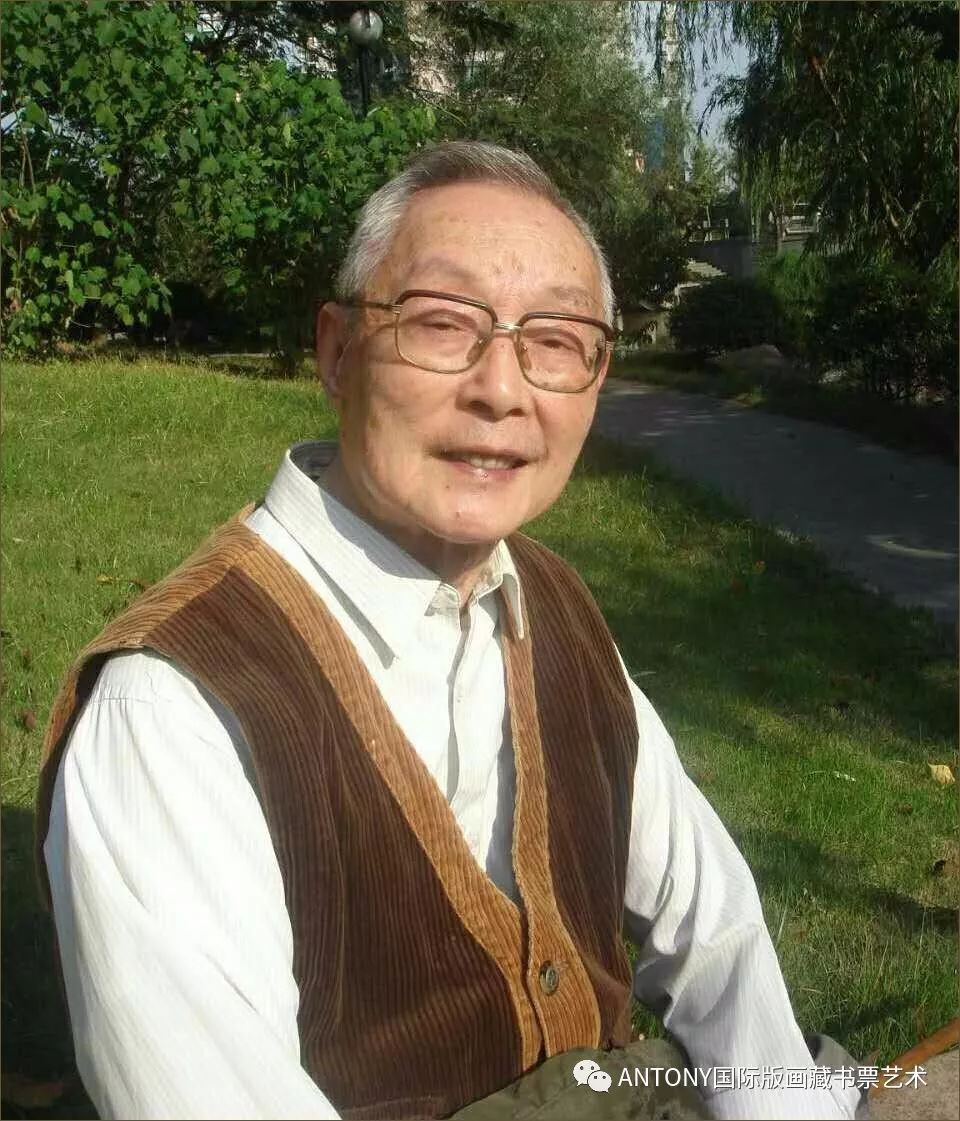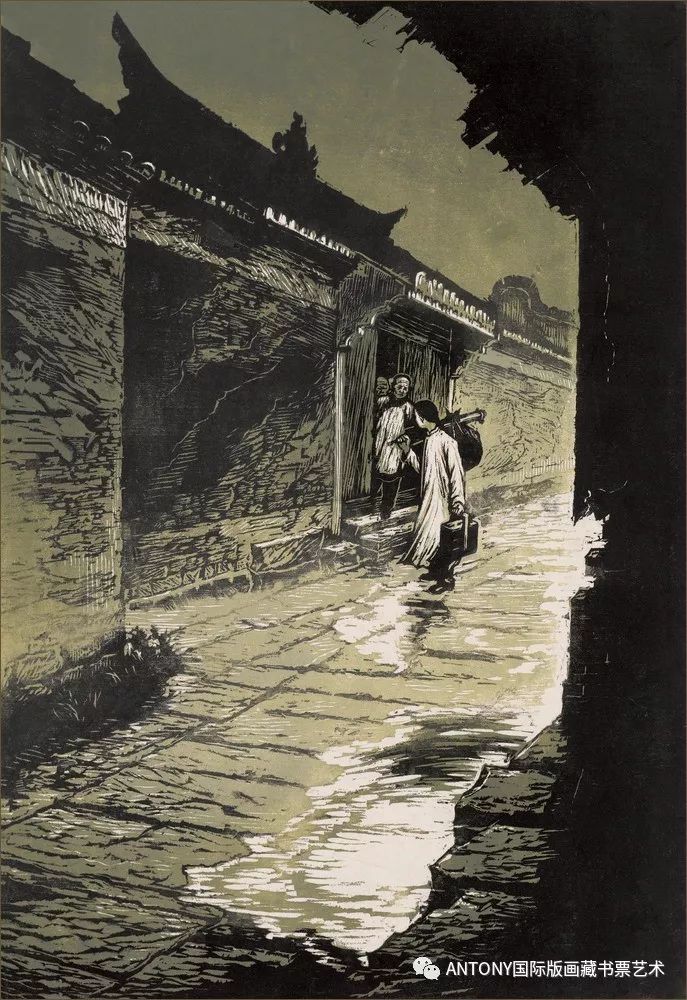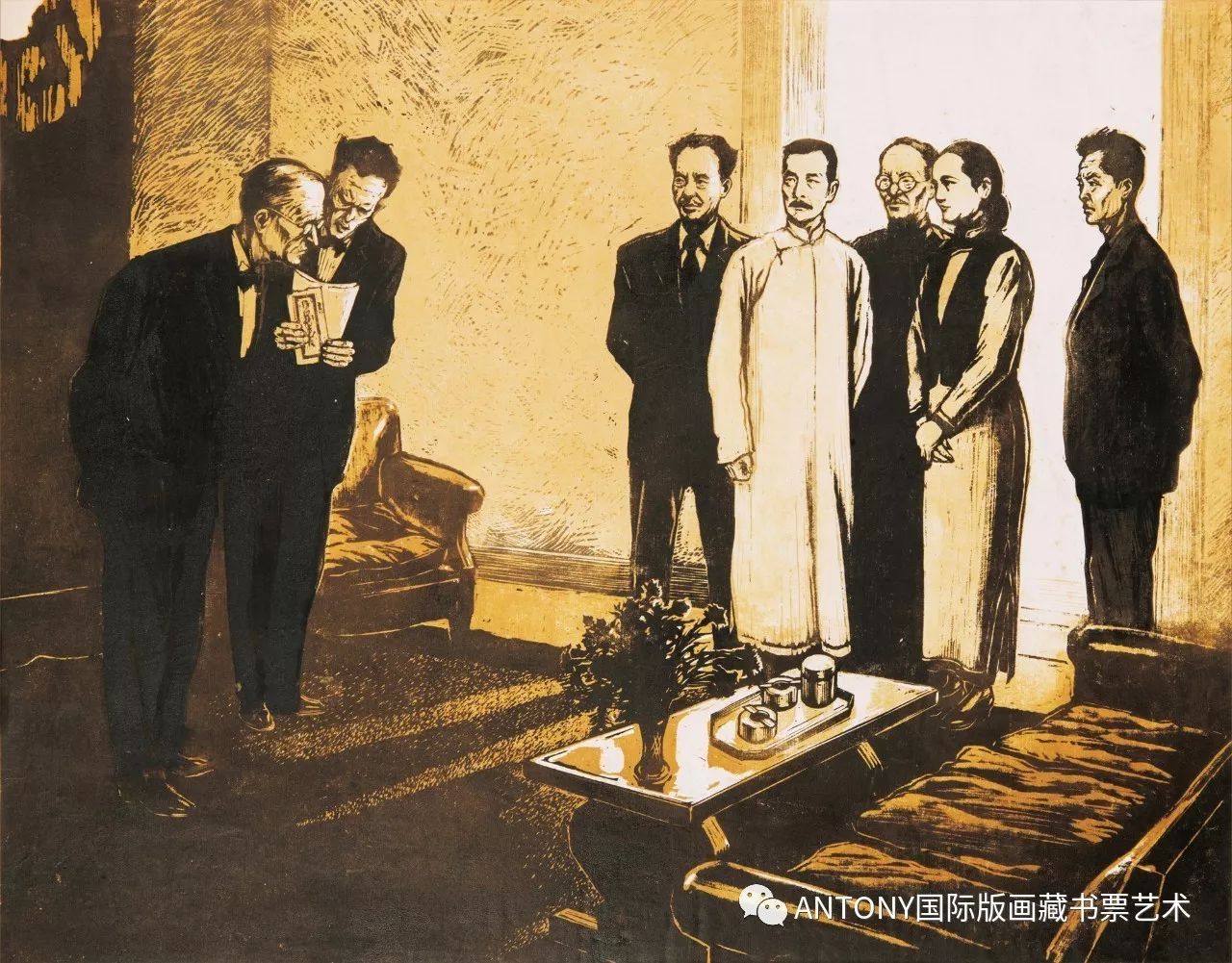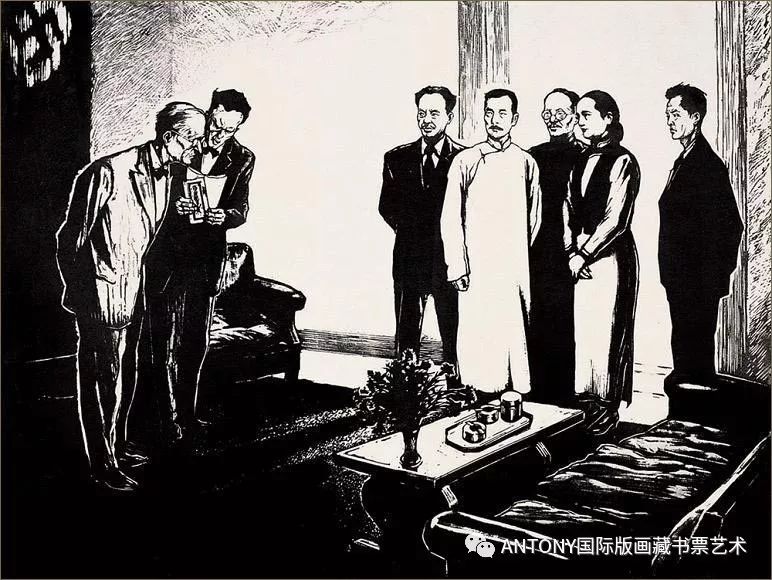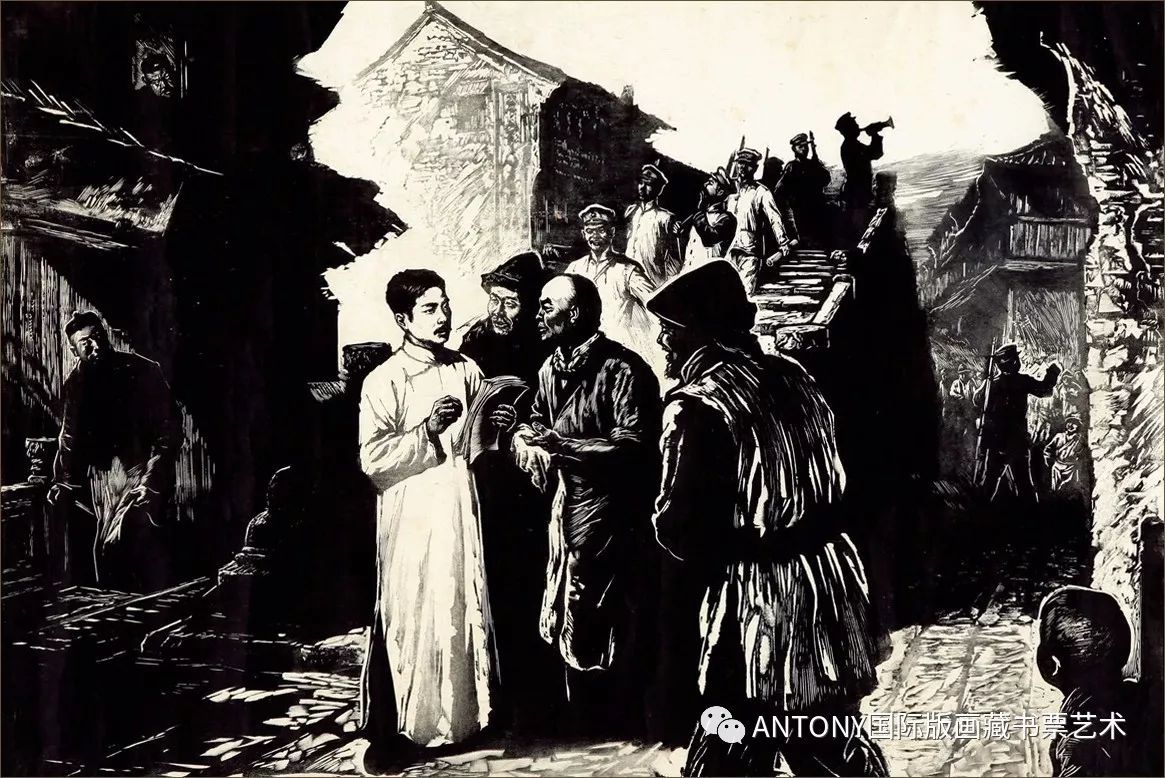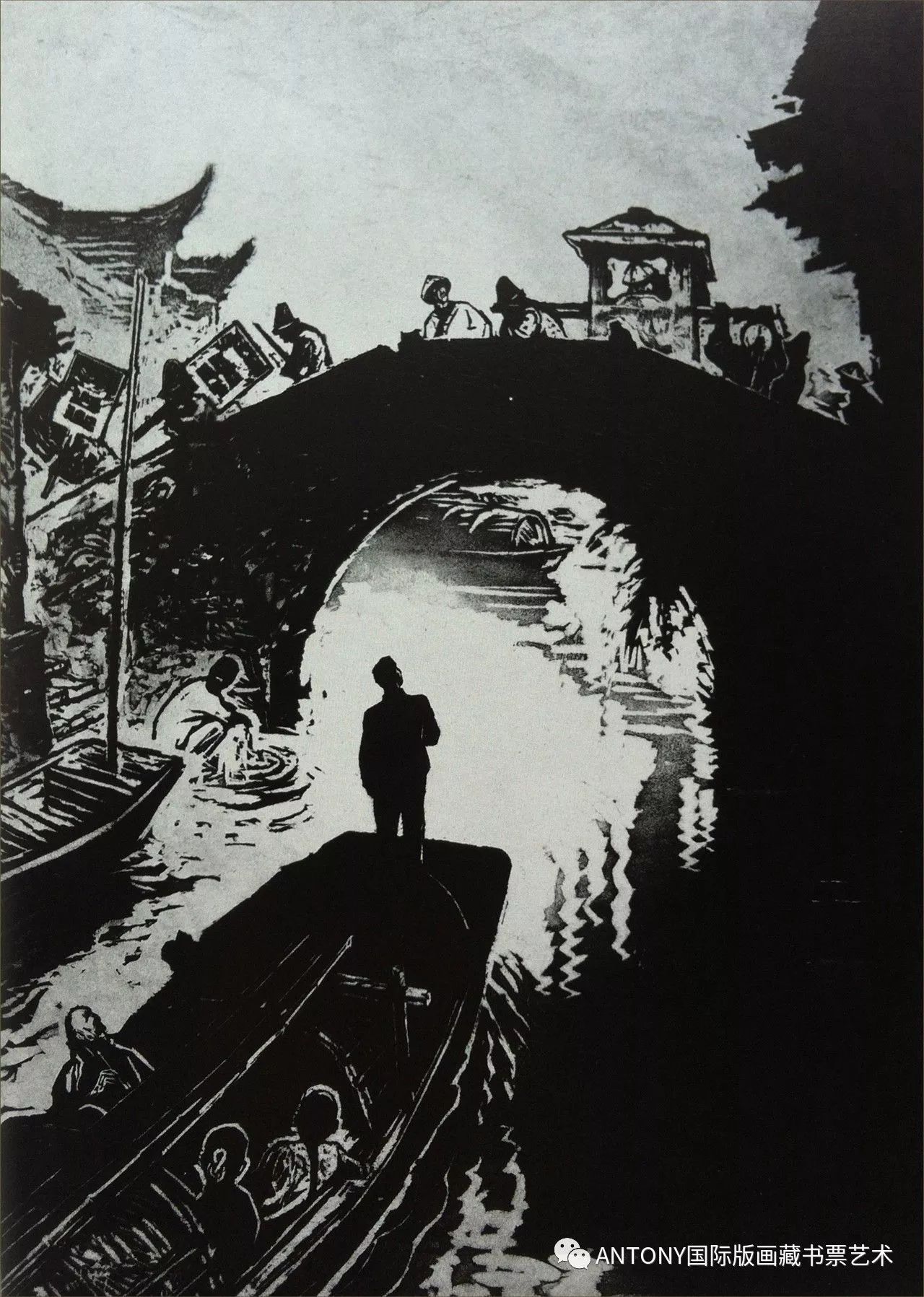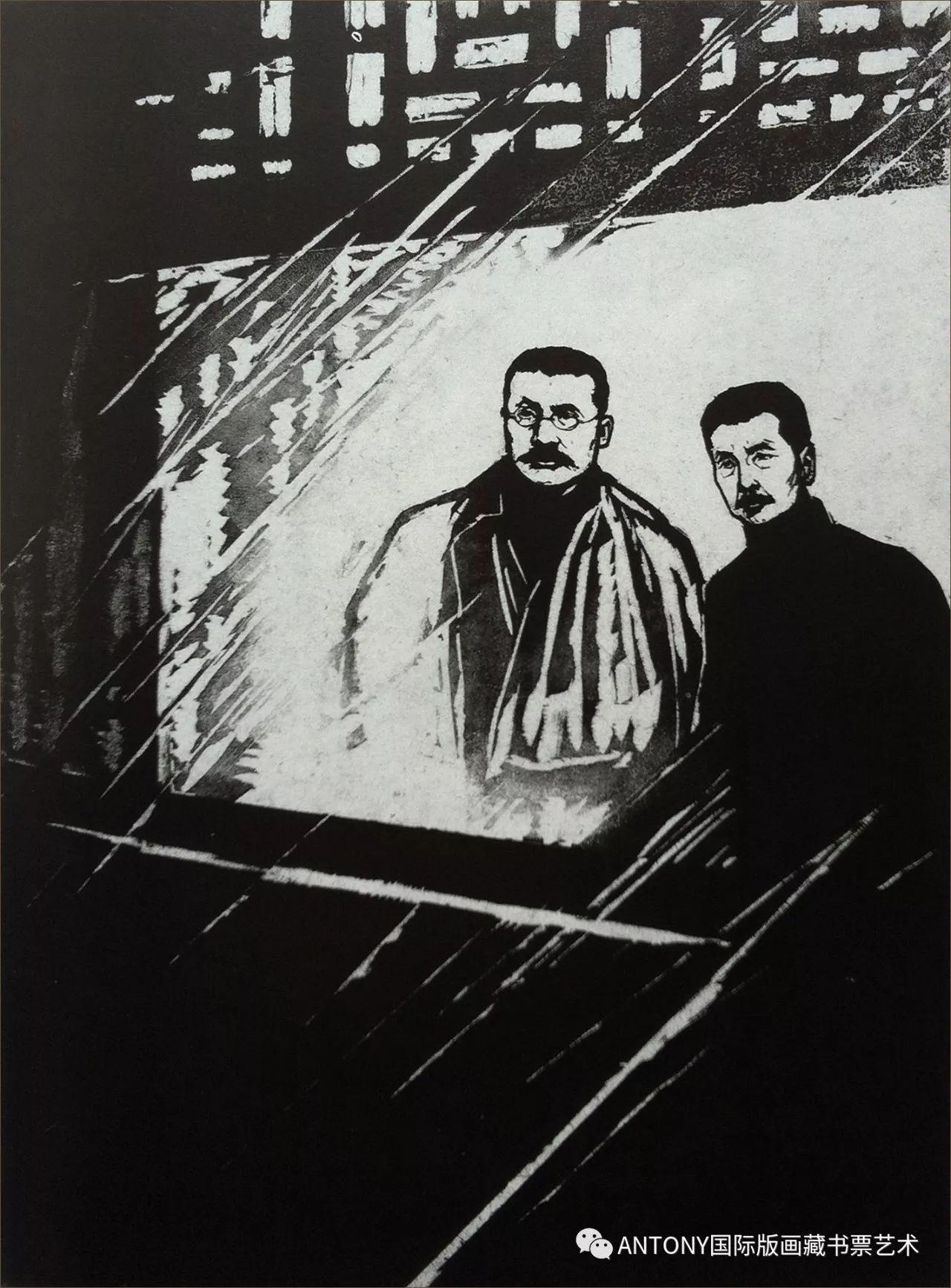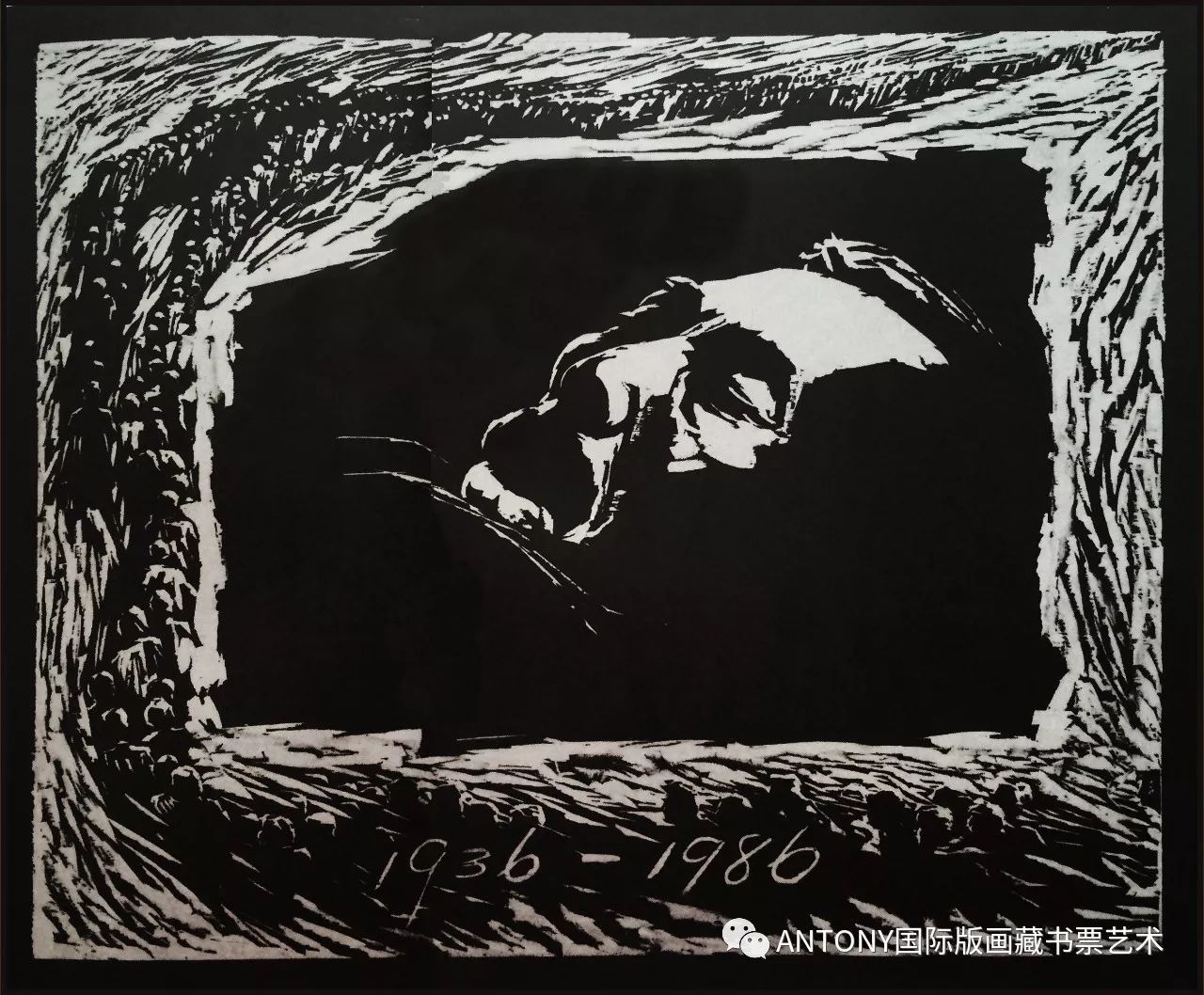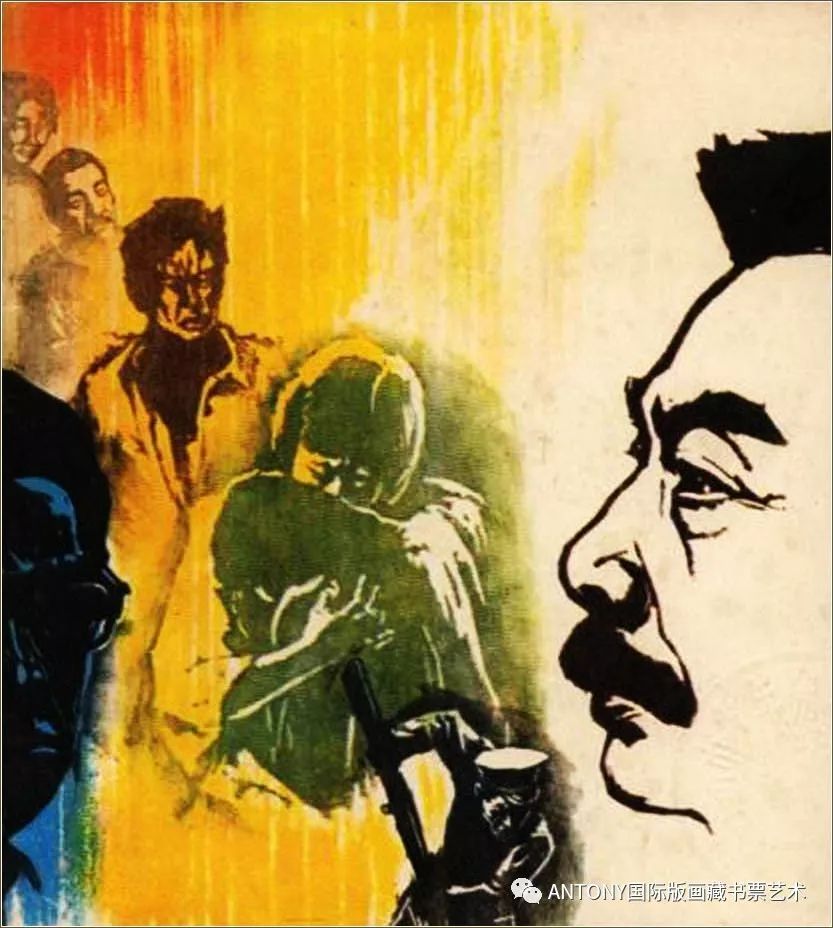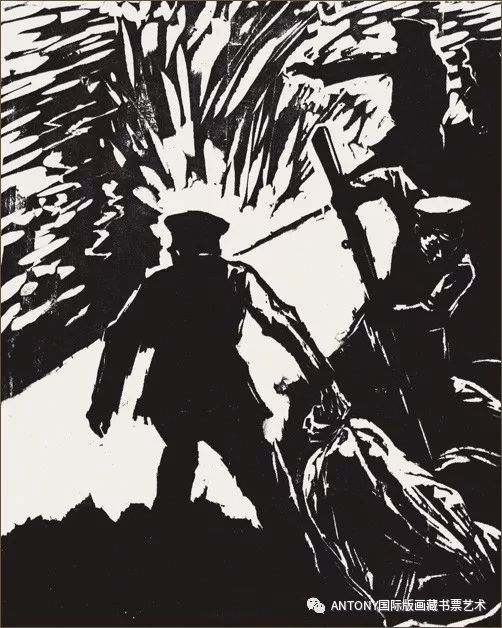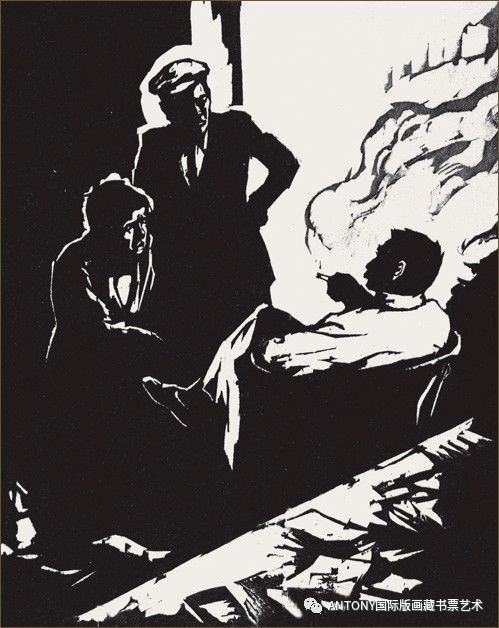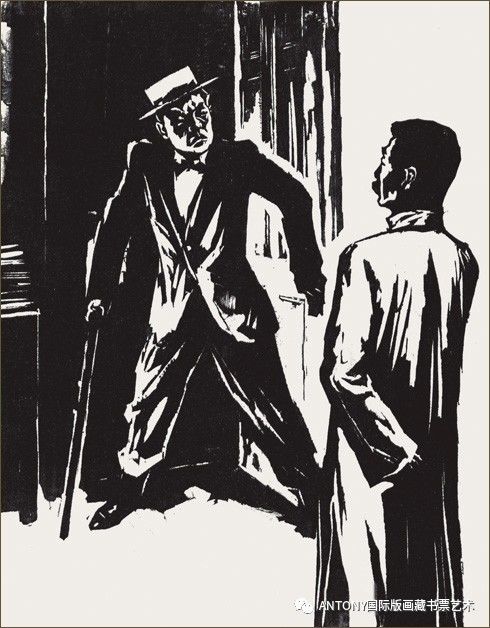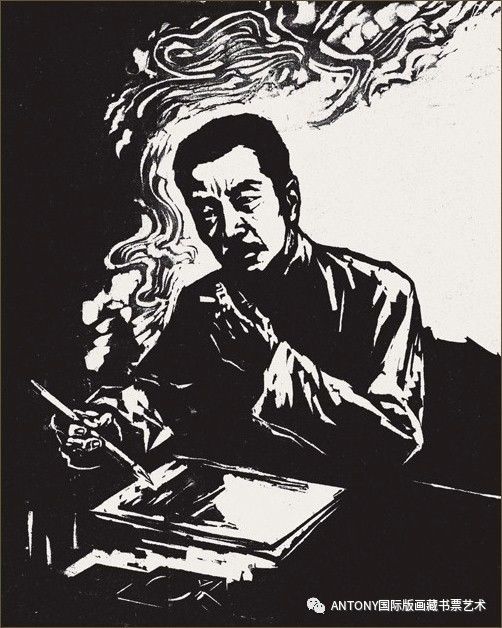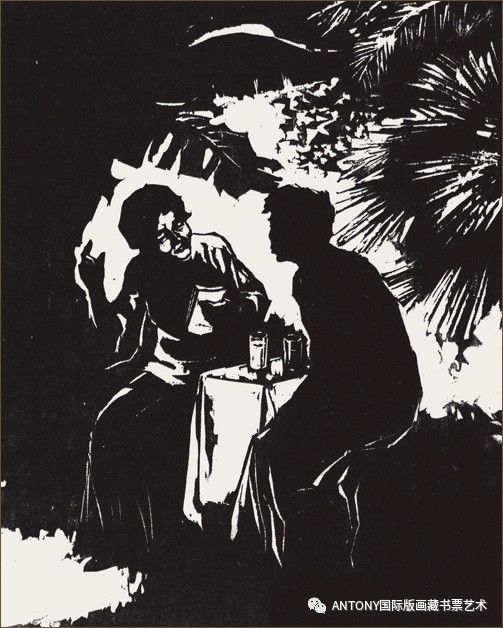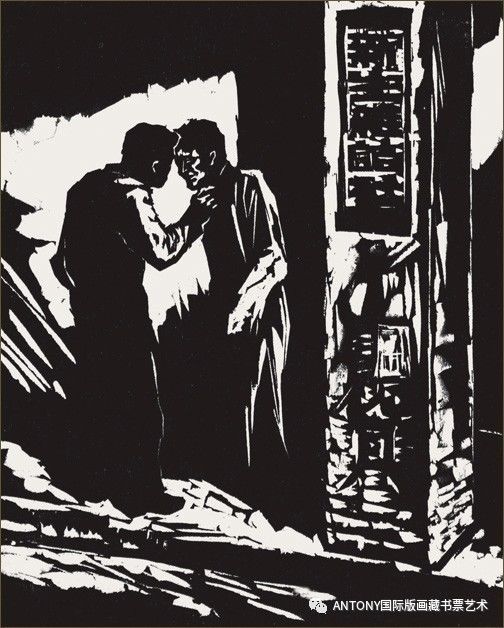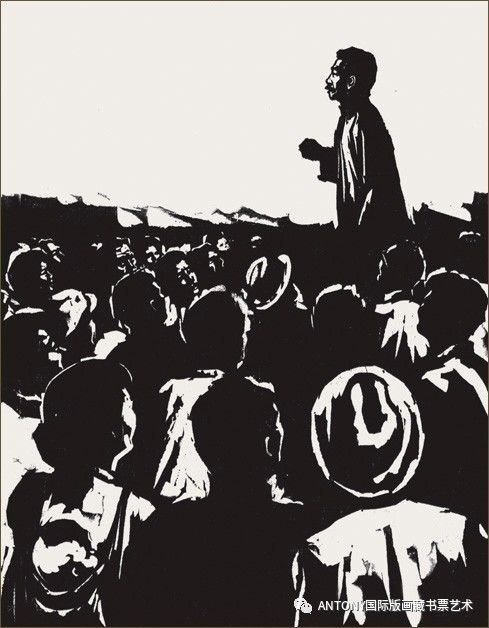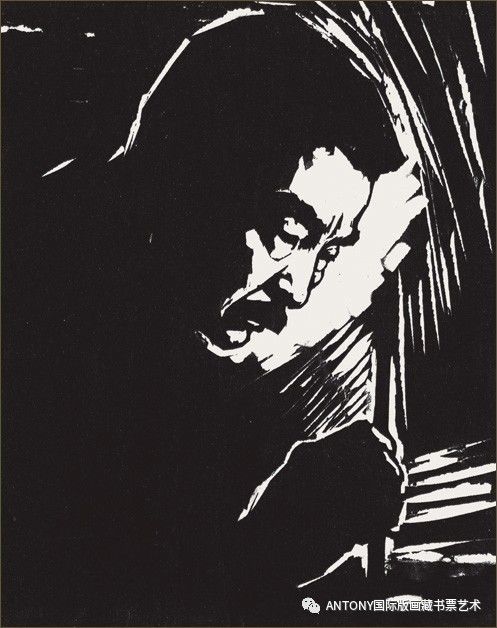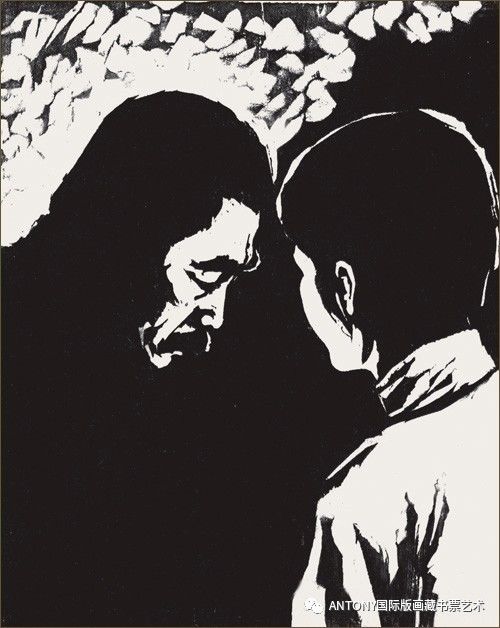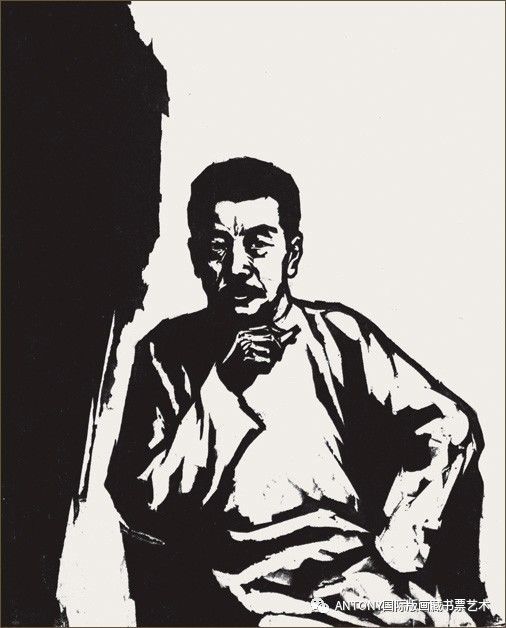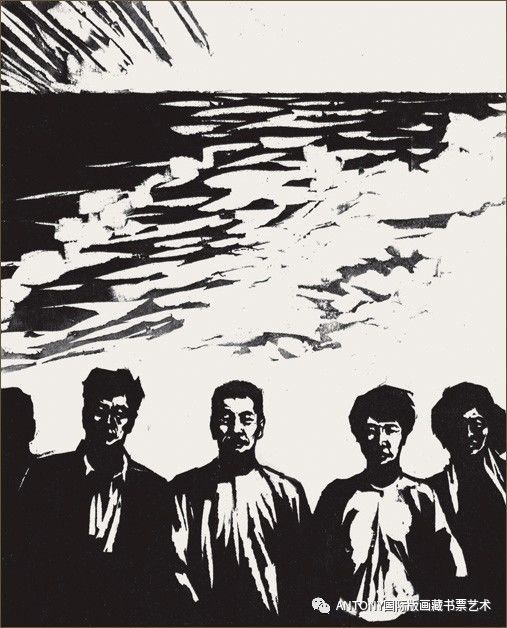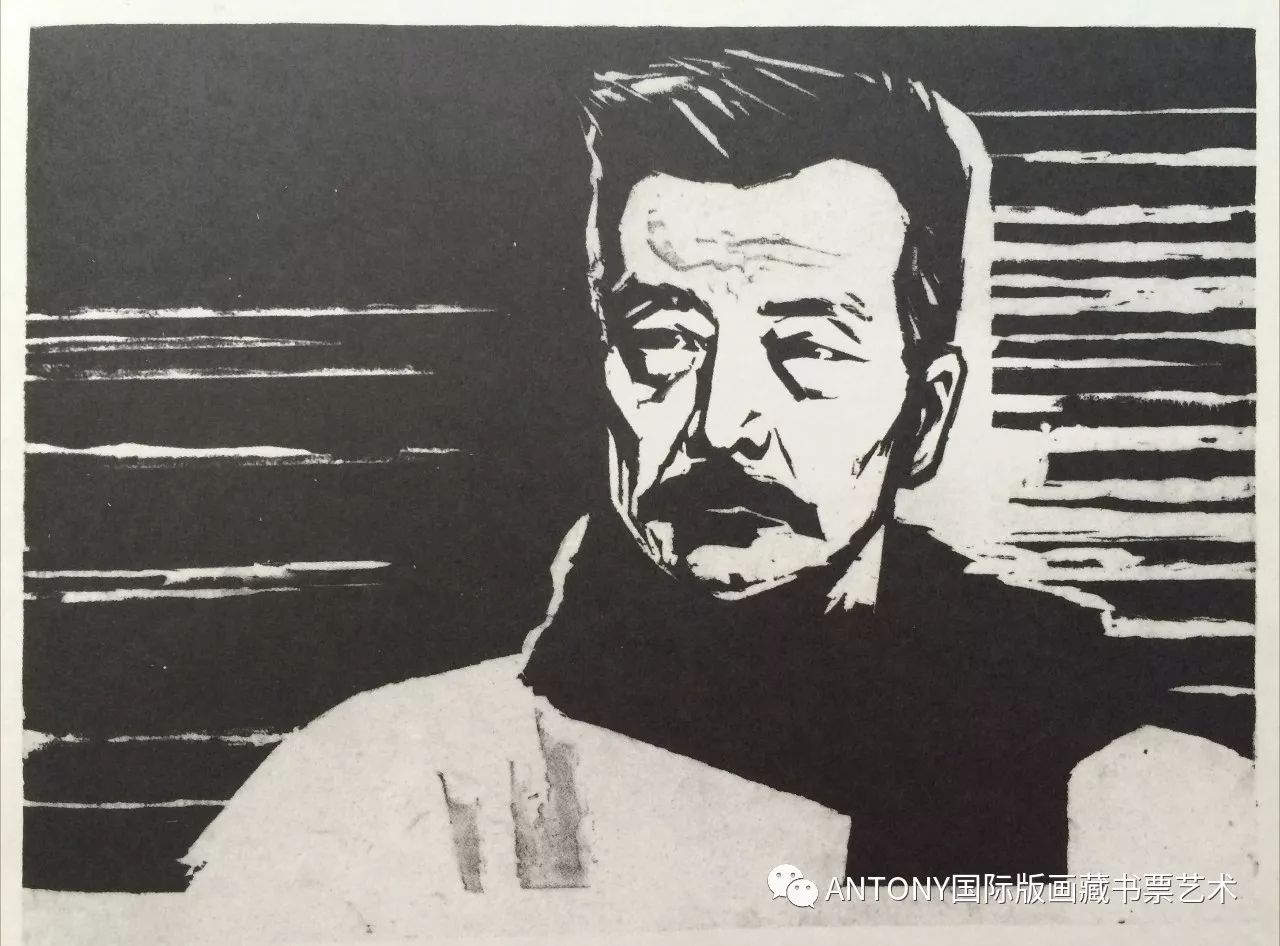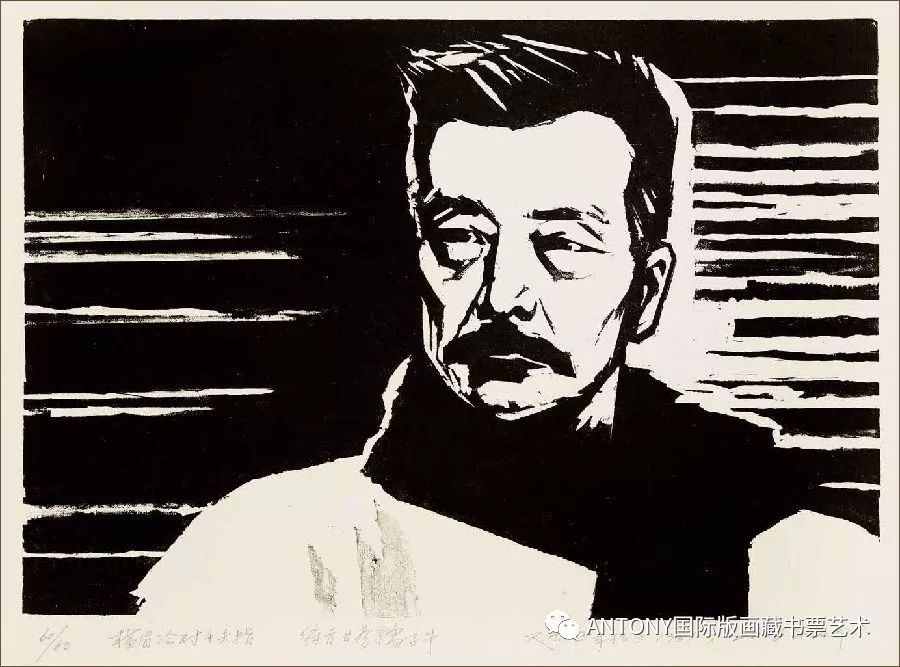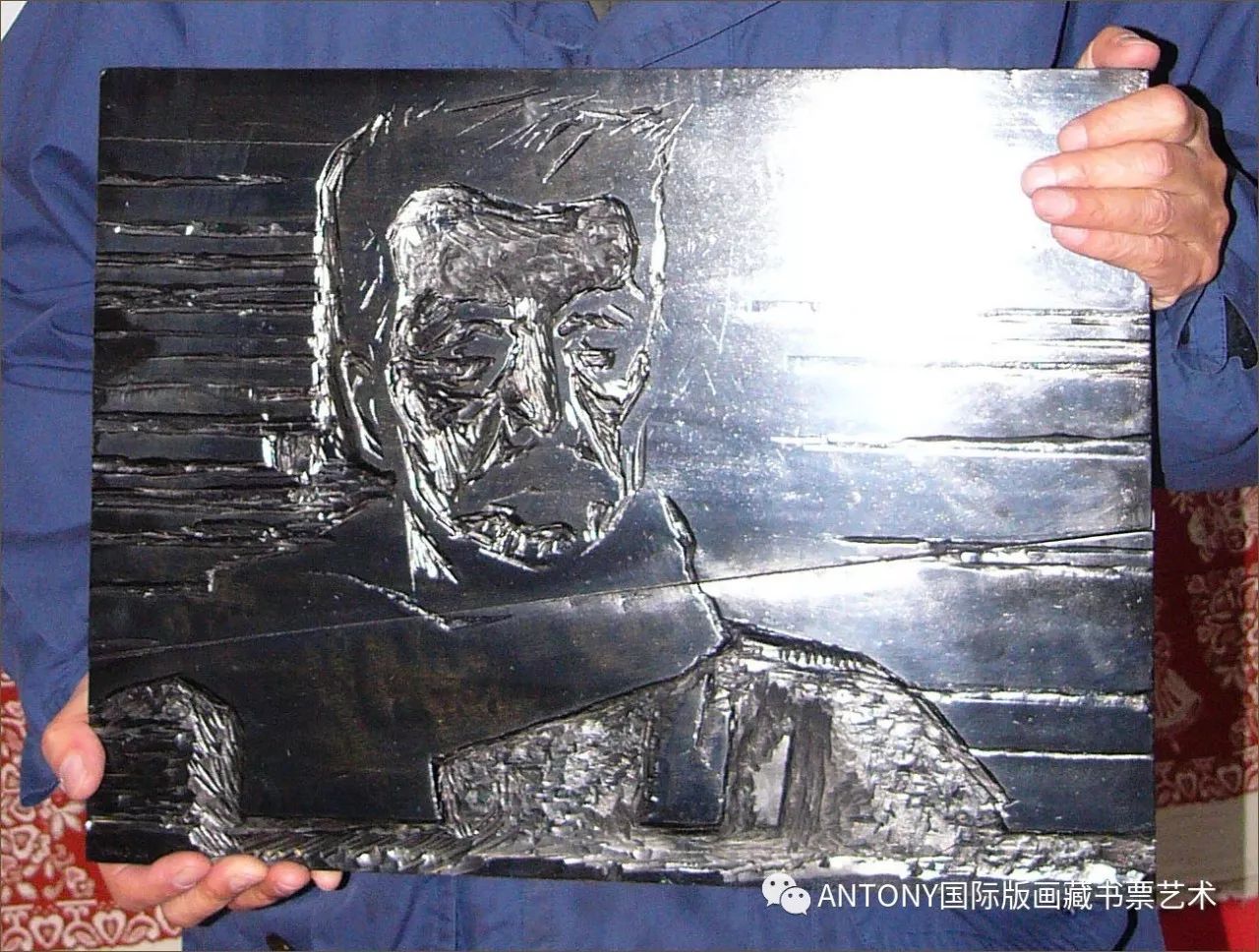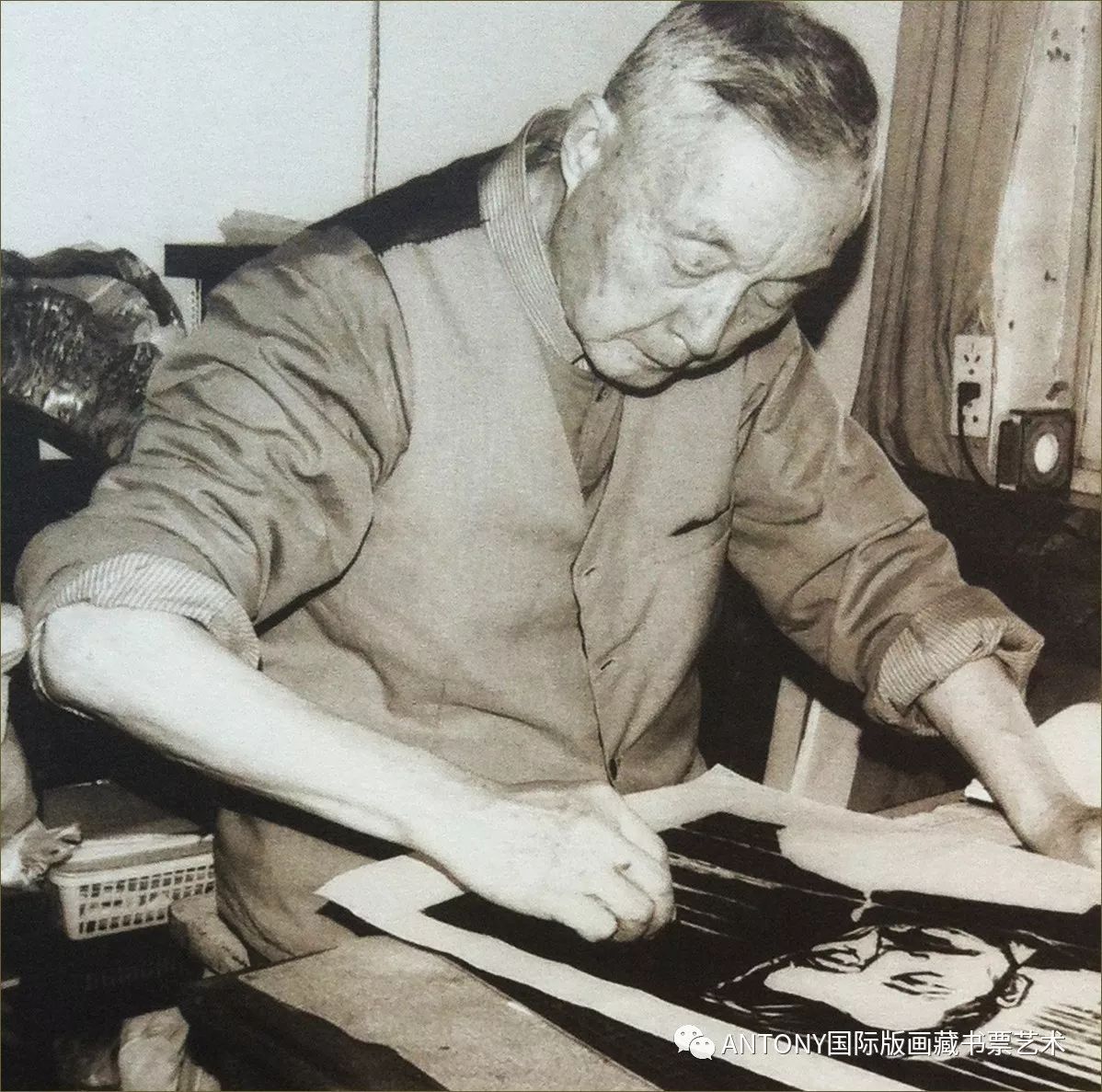| 中国版画 锻黑炼白铸精神 | 您所在的位置:网站首页 › 工匠国画 › 中国版画 锻黑炼白铸精神 |
中国版画 锻黑炼白铸精神
|
Lu Xun (September 25, 1881 - October 19, 1936), formerly known as Zhou Zhangshou, later renamed Zhou Shuren, the word Yu Shan, after the change of Henan, "Lu Xun" was published in 1918 with his "Diary of a madman" when the pen name is his most widely used pseudonym, Zhejiang Shaoxing. Famous writers and thinkers, 54 important participants of the new culture movement, founder of Chinese modern literature. Mao Zedong once commented: "the direction of Lu Xun is the direction of the new culture of the Chinese nation."." The life of Lu Xun in literary creation, literary criticism, thought research, literature study, translation theory, art introduction, basic scientific research and introduction of collating ancient books and has great contribution in many fields. He has great influence on the May 4th Movement after culture Chinese development, world renown, has an extremely important position and effect especially in Korea and Japan the ideological and cultural fields, known as "the twentieth Century East Asian cultural map accounted for the largest territory of the writer".
鲁迅先生像 Mr. Lu Xun looks like
赵延年先生 (著名版画家、美术教育家、中国美术学院教授) Mr. Zhao yannian (famous painter, art educator, Professor of The China Academy of Art) 摄影丨赵巧 Photography Zhao Qiao 赵延年先生(1924-2014)是中国著名版画艺术大师,美术教育家,中国美术学院教授。祖籍浙江湖州。1938年进上海美专学习木刻。1941年参加“中华全国木刻界抗敌协会”。曾任中国美术家协会理事丶中国版画家协会顾问丶中国美术学院教授,浙江版画家协会名誉会长,浙江省美术家协会顾问,浙江漫画研究会顾问,浙江文史馆名誉馆员等职。1991年获中国美术家协会、中国版画家协会联合颁发的“中国新兴版画杰出贡献奖”。2009年获文化部丶中国文联丶中国美术家协会联合颁发的新中国首届:中国美术奖~终身成就奖 Mr. Zhao yannian (1924-2014) is a famous Chinese printmaking artist, an art educator and a professor at The China Academy of Art. Ancestral home in Zhejiang, Huzhou. In 1938 into the Shanghai Academy of fine arts learning. 1941 to participate in the "Chinese national anti woodcut association". Former Chinese Artists Association, consultant China printmakers Association, Professor of The China Academy of Art, honorary president of Zhejiang Artists Association, consultant of Zhejiang Province Artists Association, advisor of Zhejiang comics Research Association, Zhejiang wenshiguan honorary librarian and other staff. The outstanding contribution award of China's new prints was jointly awarded by the Chinese Artists Association and the Chinese print artists association in 1991". In 2009, the first prize of new China was awarded by the Ministry of culture, China Federation of literature and art and Chinese artists association.
2004年4月13日赵延年先生在工作室 拓印黑白木刻《鲁迅像》 摄影丨赵真 In April 13, 2004, Mr. Zhao Yannian worked in the studio "Black and white woodcut" Lu Xun as " Photography Zhao Zhen 赵延年笔下有关鲁迅的创作有170幅左右,是版画界创作鲁迅作品最多的一位。 “我虽然从没见过鲁迅一面,但深受鲁迅精神影响,以及他著作的教诲。”赵延年说。
赵延年先生创作的 鲁迅先生像 (木刻局部) Mr. Zhao Yannian created by Mr. Lu Xun (woodcut) 1936年,正当上海乃至全国木刻运动走向新高潮的时刻,鲁迅在上海病逝,赵延年时年12岁。赵延年第一次知道鲁迅,是在1938后考入上海美术专科学校(现为上海大学美术学院)之后。抗日战争爆发后,戴望舒避居香港,在香港主编《大公报》文艺副刊之余,策划出版《耕耘》。一次,赵延年与几个同学看到《耕耘》里发表陕北木刻家的作品,他立刻被那些富有时代气息、生活味很浓的木刻作品所吸引,感到这样的作品才有生命力。“我原来喜欢画风景,画静物,画人体,看到木刻作品后,感受到国家与个人的关系。我觉得画画不能那样,就走向木刻。后来,我们几人自发地组织起来成立一个木刻社团,我也刻出了生平第一张木刻——《读》。” “我感到它有任何其他绘画工具所无法获取的奇妙的艺术效果。只有用刀才更能表达出我的情趣。大平刀猛铲时发出的‘咔嚓’声,使我感到从事艺术创作这种创造性劳动是最令我心醉的享受。” 赵延年开始创作以鲁迅像为题材的木刻,是从1956年开始的。 1956年是“木刻讲习会”创办25周年及鲁迅逝世20周年。当时,北京、上海和鲁迅故乡绍兴等地纷纷筹建鲁迅纪念馆,上海电影制片厂筹拍鲁迅生平的电影,亟须表现鲁迅生平事迹的美术作品。上海美术家协会受委托组织华东地区的美术家进行创作。赵延年是上海美协的专职画家,参与了创作,也开始了系统认识鲁迅的历程。当时上海美术家协会请了鲁迅夫人许广平回答画家所问,在会上,赵延年向许广平提出了两个问题,一个是,鲁迅先生平时走路的姿态和穿的是什么裤子?帽子戴的高低如何?第二,是鲁迅在写作中有无站起来走走看看的习惯? “为了创作,我对鲁迅先生的生平事迹做了初步了解,并读了不少鲁迅先生的著作及历史资料。为了描绘鲁迅,还到鲁迅的故乡走访。”赵延年说。 五年后,赵延年创作的《鲁迅像》令他家喻户晓。
鲁迅像 黑白木刻 29.2x42cm 1961年 赵延年 Lu Xun is like black and white woodcut 29.2x42cm 1961 Zhao Yannian 那是1961年,为纪念鲁迅诞辰80周年,上海人民美术出版社请当时任教于浙江美术学院版画系的赵延年创作一幅木刻作品《鲁迅像》。《鲁迅像》里,沉重的黑色背景中,鲁迅神情严肃,十字围巾围在脖子上,与白色袍子形成了强烈的冲突。 谈到《鲁迅像》的创作和加工,赵延年说,一幅肖像画的创作,绝不能局限于在某一照片里,“我着重表现鲁迅的硬骨头精神,以较多的直线,来表达鲁迅的硬骨头精神。鲁迅先生留下的照片中,并无戴围巾的照片,画面中的围巾是我推理加上去的,以围巾的里块、垂直线,同背景上的横向刀触构成强烈的对比,这样更能体现鲁迅先生的人格风貌。” 《鲁迅像》一问世,即受到广泛好评。李允经曾如此评论:“我以为赵延年作《鲁迅像》,是至今为止大约近千幅《鲁迅像》中最为优秀的作品,简直无人可以比肩。” Zhao Yannian wrote about 170 works about Lu Xun, which is one of the most prolific works of Lu Xun in the print world. "Although I have never seen Lu Xun, I am deeply influenced by Lu Xun's spirit and the teachings of his works." Zhao Yannian said. In 1936, when Shanghai and even the national woodcut movement went to a new climax, Lu Xun died in Shanghai. Zhao Yannian was 12 years old. Zhao Yannian knew Lu Xun for the first time and was admitted to Shanghai Fine Arts Academy (now Shanghai Univer and Academy of Fine Arts) after 1938. After the outbreak of Anti Japanese War, Dai Wangshu fled to Hongkong, in Hongkong, "Ta Kung Pao" Literary Supplement over the planned publication of "hard". Once, Zhao Yannian and several classmates to see the "hard" published in Northern Shaanxi woodcut works, he was immediately attracted to the rich flavor of the times, life is a very strong smell of woodcut works, feel that works like the vitality. "I used to paint landscapes, paint still life, paint people, see woodcut works, and feel the relationship between the state and the individual. I don't think painting can go that way. Later, several of us spontaneously organized to form a woodcut society, and I carved the first woodcut of the book "reading"." "I feel that it has wonderful artistic effects that no other painting tool can get. It's only with a knife that I can express my taste more. A large knife tackled the "click" sound, so I am engaged in the creative art work is what I enjoy." Zhao Yannian began to create woodcut with the theme of Lu Xun, which began in 1956. 1956 is the "living seminar" was founded in 25th anniversary and Lu Xun died in 20th anniversary. At that time, Beijing, Shanghai and the hometown of Lu Xun, Shaoxing and other places have to build the Lu Xun memorial hall, Shanghai film studio choupai film of Lu Xun's life, to show the life of Lu Xun's art works. Shanghai Artists Association is commissioned to organize artists in East china. Zhao Yannian is a full-time painter of Shanghai Artists Association, involved in the creation, also began to know Lu Xun's course system. At the time of the Shanghai Artists Association invited Mrs. Lu Xun Xu Guangping to answer the artist asked, at the meeting, Zhao Yannian asked Xu Guangping two questions, one is that Mr Lu Xun usually walk and what is wearing pants? How high hat? Second, is Lu Xun in writing a stand up and walk to see the habit? In order to create, I made a preliminary understanding of the life story of Mr. Lu Xun, and read a lot of Lu Xun's works and historical materials. In order to depict Lu Xun, visit Lu Xun's hometown." Zhao Yannian said. Five years later, Zhao Yannian created "Lu Xun like", making him a household name. In 1961, in order to commemorate the birth of Lu Xun 80th anniversary, Shanghai people's art publishing house was invited to teach at Academy of Fine Arts in Zhejiang Printmaking Department of Zhao Yannian created a woodcut work "Lu Xun" (the first picture above). In the image of Lu Xun, in the heavy black background, Lu Xun looks solemn, cross scarf around his neck, and a strong conflict with the white gown. Talking about "Lu Xun as" the creation and processing, said Zhao Yannian, a portrait of the creation, must not be confined in a photo, I focused on the performance of Lu Xun's indomitable spirit, with more straight, to express Lu Xun's indomitable spirit. Mr. Lu Xun left in the photo, wearing a scarf no photos, pictures of the scarf is added to my reasoning, scarf in block, vertical lines, horizontal contact with knife on the background of a strong contrast, so more of Mr. Lu Xun's personality style." The image of Lu Xun came out and was widely praised. Li Yunjing once commented: "I thought Zhao Yannian was" Lu Xun ", and it was the most outstanding work of about 1000 Lu Xun images so far."
1962年赵延年先生 在杭州浙江美术学院工作室创作版画 In 1962, Mr. Zhao Yannian was in Hangzhou Printmaking at the studio of Academy of Fine Arts in Zhejiang
1978年赵延年先生在杭州创作《阿Q正传》六十图 In 1978, Mr. Zhao Yannian created in Hangzhou Sixty diagrams of the true story of Ah Q
2005年在北京鲁迅博物馆举办 《纪念鲁迅诞辰124周年 -----赵延年1938-2004年木刻展》的开幕式上, 赵延年先生和鲁迅先生的儿子周海婴(左)、 版画家李平凡(右)合影。 2005 was held at the Lu Xun Museum in Beijing The opening ceremony of the 1938-2004 year woodcut exhibition of Lu Xun's birthday 124th Anniversary - Zhao Yannian, Mr. Zhao Yannian and Mr. Lu Xun's son Zhou Haiying (left), Photo artist Li Pingfan (right).
赵延年先生2010年10月3日在杭州 摄影丨赵巧 Mr. Zhao Yannian was in Hangzhou in October 3, 2010 Photography Qiao Zhao 木刻版画作品 Woodcut works
离家 套色木刻 45x29.5cm 1956年 赵延年 Chromatic woodcut from home 45x29.5cm 1956 Zhao Yannian 那是一个雨天,绍兴都昌坊小巷还是旧时模样,黑瓦顶上杂草丛生,高高的砖墙斑驳陆离,铺路的都是青石板,行人极少。遇到一位姓王的老人,是在周家做过多年的老长工,我同他聊起来,他还记得鲁迅先生当时是怎样离家出行的:“大先生(鲁迅排行老大)的行李还是我挑咯”。我望着破旧的周家大门,很自然地又想起了我小时候住过的苏州小巷,脑子里一下子浮现出鲁迅提着考篮、背着包袱,同送出门口的母亲回首告别的画面。回上海后,我完成了两幅作品:《抗议》和《离家》,后者就是表现18岁的鲁迅第一次离家,“走异路、逃异地,去寻求别样的人生”(鲁迅语)的特有心情。这幅作品被绍兴鲁迅纪念馆作为了陈列品。“文化大革命”中,有人认为我画中的鲁迅回头是眷恋旧家庭,不够革命,撤下后换上了另一位画家的作品,鲁迅怒目攥拳,毅然决然迈步而去。“文化大革命”结束,纪念馆里又换上了我的旧作。文/赵延年 It was a rainy day, Shaoxing Duchang Fang alley or old appearance, black roof overgrown and high brick walls are variegated, paving stone, very few pedestrians. A man surnamed Wang, is done for many years long in the week, I chatted with him, he still remembers how Mr. Lu Xun was away from home travel: "Mr. (Lu Xun the eldest) or my luggage pick". I looked at the door weeks old, it is natural to think of me when I was a child lived in Suzhou alley, mind suddenly emerge out of Lu Xun carrying test basket, carrying the baggage, with the mother sent farewell picture back door. After returning to Shanghai, I have completed two works: "protest" and "home", the latter is 18 year old Lu Xun home for the first time, "go a different way of escape, in different places, to seek another life" (Lu Xun language) special mood. The work was presented as a display by the Lu Xun Memorial in Shaoxing. During the "Cultural Revolution", some people think that my paintings of Lu Xun back is attached to the old family, not revolution, removed was changed after another painter, Lu Xun angrily clenched fist, and resolutely move to. The "Cultural Revolution" ended, the memorial hall and put on my old. Wen / Zhao Yannian
抗议 套色木刻 38x49cm 1956年 赵延年 Protest chromatic woodcut 38x49cm 1956 Zhao Yannian
抗议 黑白木刻 38x49cm 1956年 赵延年 Protest black and white woodcut 38x49cm 1956 Zhao Yannian 画中的德国领事的形象是一个德国人弯曲着身子,向前低着头。当时美协只给了一个题目,那就是《抗议》,除此以外没有别的素材,于是我就到上海《申报》社寻找30年代的报纸,最终找到了一小段新闻文字,但却没有新闻图片。上面有“中国民权保障同盟”人员,包括有宋庆龄、鲁迅等人到德国领事馆提交抗议书的新闻,这就是我创作的最初历史根据。如何将这样一段文字转化成人物形象,这是一个棘手的问题。现在留下的草图只有三四张,但在整个创作过程中,我反复斟酌,画了很多的草图。整个画面呈两军对垒的形势,双方出现什么样的人,以何种姿态面貌出现,这都是凭借我当时的推测来勾画的,因为我认为生活本身应该有它自身的规律的。如何挖掘生活的本原,如何恰如其分地通过作品表现出来,这都是艺术家要做的功课。关于该画中的宋庆龄与蔡元培等人的形象都是以照片为素材创作出来的。后来,我偶然见到了有关的新闻图片,但是,此时作品《抗议》已经问世,令人诧异的是,图片中的德国人形象跟画面中的人物形象如出一辙。前几年,上海的一位德国总领事芮悟峰博士他想买这幅画,他说要将这幅画挂在他的办公室,因为《抗议》中的这位德国领事就是他的前任,他说他要时刻以这张画警示自己。2006年初,德国的另外一位女博士专程去杭州就这张画的创作过程采访了我。当时,中国的信息交流很不方便,但对鲁迅先生等人抗议德国法西斯迫害德国进步文化人士这件事刻画,我认为还是很真实的,它的成功源于我平时对时事、对艺术的敏感性的训练。随着时间的推移,《抗议》这张画的历史意义与绘画价值得到了越来越多的人的肯定。在我所有的作品中所反映的是普通人的心愿,因此,我的作品具有大众性,受众面还是较广的。文/赵延年 The image of the German consul in the picture was a German bent, with his head bowed forward. At that time he gave only a topic, that is "protest", in addition there is no other material, so I went to Shanghai for the 30s "Declaration" agency newspaper, finally found a piece of news text, but there is no news pictures. There is the "China Civil Rights Protection Alliance" personnel, including Song Qingling, Lu Xun and other people submitted to the German Consulate protest news, this is the first historical basis of my creation. How to translate such a paragraph into a character is a difficult problem. Now there are only three or four sketches left, but throughout the process, I've been working over it and sketching a lot. The whole picture is playing the situation, both sides appear what kind of person, what kind of attitude to face, this is all I was with that to draw, because I think that life itself should have its own laws. How to excavate the origin of life and how to express it properly through the works are all the homework that the artist should do. The images of Song Qingling and Cai Yuanpei in the painting are created from photographs. Later, I happened to see the news pictures, but at this time the work "protest" has been published, surprisingly, the image of the German image is similar to the figure in the picture. A few years ago, a German consul general Dr. Rui Feng Wu Shanghai, he wanted to buy the painting, he said to the picture in his office, because "the German Consulate in protest" is his predecessor, he said that he should always take this picture warning myself. In early 2006, another German doctor went to Hangzhou to interview me about the creation of this painting. At that time, the exchange of information Chinese was not easy, but for Mr. Lu Xun and others protested the German Fascist persecution of German culture to progress this thing depict, I think it is very true that its success is due to my usual sensitivity to current affairs, for the arts training. With the passage of time, the historical significance and painting value of "protest" is getting more and more people's affirmation. In all my works, it reflects the wishes of ordinary people. Therefore, my works are popular and have a wide audience. Wen / Zhao Yannian
上街宣传 黑白木刻 赵延年 Go to the streets to promote black and white woodcut Zhao Yannian
鲁迅评水浒 黑白木刻 1976年 赵延年 Lu Xun's comment on black and white woodcut in 1976 Zhao Yannian
鲁迅 黑白木刻 1981年 赵延年 Lu Xun black and white woodcut 1981 Zhao Yannian
死 黑白木刻 25.9x20cm 1973年 赵延年 Dead black and white woodcut 25.9x20cm 1973 Zhao Yannian
鲁迅先生 黑白木刻 27x20.2cm 1978年 赵延年 Black and white woodcut of Mr. Lu Xun 27x20.2cm 1978 Zhao Yannian
鲁迅先生像 黑白木刻 1976年 赵延年 Mr. Lu Xun, like black and white woodcut, Zhao Yannian in 1976
鲁迅传 插图之一 黑白木刻 1962年 赵延年 One of Lu Xun's illustrations Black and white woodcut 1962 Zhao Yannian
鲁迅传 插图之二 黑白木刻 1962年 赵延年 Lu Xun's illustration two Black and white woodcut 1962 Zhao Yannian
鲁迅传 插图之三 黑白木刻 1962年 赵延年 Lu Xun's illustration three Black and white woodcut 1962 Zhao Yannian
鲁迅传 插图之四 黑白木刻 1962年 赵延年 Lu Xun's illustration four Black and white woodcut 1962 Zhao Yannian
鲁迅与我们同在 ----纪念鲁迅先生逝世五十周年 黑白木刻 64x53cm 1986年 赵延年 Lu Xun is with us -- in memory of Mr. Lu Xun's death 50th anniversary Black and white woodcut 64x53cm 1986 Zhao Yannian 木刻插图作品 鲁迅在广州 Woodcut illustration works Lu Xun in Guangzhou
鲁迅在广州 黑白木刻插图 1981年 赵延年 Lu Xun's black and white woodcut illustrations in Guangzhou 1981 Zhao Yannian
鲁迅在广州 之一 黑白木刻 21.5x17cm 1981年 赵延年 Lu Xun, one of the black and white woodcut in Guangzhou 21.5x17cm 1981 Zhao Yannian
鲁迅在广州 之二 黑白木刻 21.5x17cm 1981年 赵延年 Two black and white woodcut in Lu Xun in Guangzhou 21.5x17cm 1981 Zhao Yannian
鲁迅在广州 之三 黑白木刻 21.5x17cm 1981年 赵延年 Three black and white woodcut inLu Xun in Guangzhou 21.5x17cm 1981 Zhao Yannian
鲁迅在广州 之四 黑白木刻 21.5x17cm 1981年 赵延年 Four black and white woodcut in Lu Xun in Guangzhou 21.5x17cm 1981 Zhao Yannian
鲁迅在广州 之五 黑白木刻 21.5x17cm 1981年 赵延年 Five black and white woodcut in Lu Xun in Guangzhou 21.5x17cm 1981 Zhao Yannian
鲁迅在广州 之六 黑白木刻 21.5x17cm 1981年 赵延年 Six black and white woodcut inLu Xun in Guangzhou 21.5x17cm 1981 Zhao Yannian
鲁迅在广州 之七 黑白木刻 21.5x17cm 1981年 赵延年 Seven black and white woodcut in Lu Xun in Guangzhou 21.5x17cm 1981 Zhao Yannian
鲁迅在广州 之八 黑白木刻 21.5x17cm 1981年 赵延年 Eight black and white woodcut in Lu Xun in Guangzhou 21.5x17cm 1981 Zhao Yannia
鲁迅在广州 之九 黑白木刻 21.5x17cm 1981年 赵延年 Nine black and white woodcut in Lu Xun in Guangzhou 21.5x17cm 1981 Zhao Yannia
鲁迅在广州 之十 黑白木刻 21.5x17cm 1981年 赵延年 Ten black and white woodcut in Lu Xun in Guangzhou 21.5x17cm 1981 Zhao Yannia
鲁迅在广州 之十一 黑白木刻 21.5x17cm 1981年 赵延年 Eleven black and white woodcut in Lu Xun in Guangzhou 21.5x17cm 1981 Zhao Yannia
鲁迅在广州 之十二 黑白木刻 21.5x17cm 1981年 赵延年 Twelve black and white woodcut in Lu Xun in Guangzhou 21.5x17cm 1981 Zhao Yannia
鲁迅在广州 之十三 黑白木刻 21.5x17cm 1981年 赵延年 Thirteen black and white woodcut in Lu Xun in Guangzhou 21.5x17cm 1981 Zhao Yannia
鲁迅在广州 之十四 黑白木刻 21.5x17cm 1981年 赵延年 Fourteen black and white woodcut in Lu Xun in Guangzhou 21.5x17cm 1981 Zhao Yannia
鲁迅在广州 之十五 黑白木刻 21.5x17cm 1981年 赵延年 Fifteen black and white woodcut in Lu Xun in Guangzhou 21.5x17cm 1981 Zhao Yannia
鲁迅在广州 之十六 黑白木刻 21.5x17cm 1981年 赵延年 Sixteen black and white woodcut in Lu Xun in Guangzhou 21.5x17cm 1981 Zhao Yannia
鲁迅在广州 之十七 黑白木刻 21.5x17cm 1981年 赵延年 Seventeen black and white woodcut in Lu Xun in Guangzhou 21.5x17cm 1981 Zhao Yannia
鲁迅在广州 之十八 黑白木刻 21.5x17cm 1981年 赵延年 Eighteen black and white woodcut in Lu Xun in Guangzhou 21.5x17cm 1981 Zhao Yannia
鲁迅在广州 之十九 黑白木刻 21.5x17cm 1981年 赵延年 Nineteen black and white woodcut in Lu Xun in Guangzhou 21.5x17cm 1981 Zhao Yannia
鲁迅在广州 之二十 黑白木刻 21.5x17cm 1981年 赵延年 Twenty black and white woodcut in Lu Xun in Guangzhou 21.5x17cm 1981 Zhao Yannia
鲁迅在广州 之二十一 黑白木刻 21.5x17cm 1981年 赵延年 Twenty-one black and white woodcut in Lu Xun in Guangzhou 21.5x17cm 1981 Zhao Yannia
鲁迅在广州 之二十二 黑白木刻 21.5x17cm 1981年 赵延年 Twenty-two black and white woodcut in Lu Xun in Guangzhou 21.5x17cm 1981 Zhao Yannia 意在黑白之间——关于木刻作品 《鲁迅像》的记忆 文丨肖尧 Intended between black and white - about woodcut works The memory of the image of Lu Xun James Xiao Yao 1961年,上海人民美术出版社为纪念鲁迅先生诞辰80周年,约请当时任教于浙江美术学院版画系的赵延年先生创作了一幅单幅木刻作品─《鲁迅像》。赵先生对画面作了这样的处理:沉重的黑色背景中,道道横线显露出肃杀的时代氛围;鲁迅昂然的头颅在呈十字状的围巾支撑下,连同他顶上不屈的头发,同背景形成了强烈的冲突。虽然只有黑白两色,却已让人看到了一个直面人生的鲁迅。简简单单的黑和白,完成了赵先生对一位伟人发自内心的默唱。《鲁迅像》一问世,即受到人们的广泛好评,即使到了40多年后的今天,仍然受到人们的喜爱。我国版画史家李允经先生曾做过这样的评论:“我以为赵作《鲁迅像》,是至今为止大约近千幅《鲁迅像》中最为优秀的作品,简直无人可以比肩。”那年,赵先生37岁。 黑与白,与缤纷的五彩相比,似乎显得那么的单调。然而,对赵延年先生这位我国的著名版画艺术家来说,这色彩世界里不能调和的两极之间单纯而强烈的搏杀,是他一生的艺术追求。他说过:“黑白是多种色彩的提炼与概括。黑白木刻中如何运用黑与白这两个对比色是很要琢磨的。黑白处理,既要合画的内涵,同时也要掌握分寸,必需使之既符合内涵的需要,又符合一般的客观规律,且具有美感。”这些富含哲理的“黑白论”,在赵先生的代表作《鲁迅像》中,被他手握的刻刀诠释得淋漓尽致。
鲁迅像 黑白木刻 29.2x42cm 1961年 赵延年 Lu Xun is like black and white woodcut 29.2x42cm 1961 Zhao Yannian
鲁迅像 黑白木刻 29.2x42cm 1961年 赵延年 2014年修改后的(去掉了额纹) Lu Xun is like black and white woodcut 29.2x42cm 1961 Zhao Yannian Revised in 2014 (removed the frontal lines)
鲁迅像 黑白木刻原版 29.2x42cm 1961年 赵延年 Lu Xun is like a black and white woodcut 29.2x42cm 1961 Zhao Yannian 那么,这里的灰色有什么可惊奇呢? 千百年来,黑白木刻都只有黑白两色,这是由其技术手段所决定的。即使想在其画面中要一点与黑白相近的灰色,必须通过套色或填彩手法才能得到。可是赵先生这幅作品中的灰色既不是套色,也不是填彩,分明是印出来的。可怎么能印出来呢? 其实,与其说这些灰色是“印”出来的,不如说是“刻”出来的。 当时,赵先生正处于他以大平刀刻作见长的独特风格初创期。大平刀是一把较难驾驭的刻刀,多数刻作者只是在铲刻木板上的大块空白时才用到它。可赵先生却偏偏喜爱使用大平刀。他认为,大平刀爽直、利落、凶悍,具有爆发力。因此,在刻作这幅作品时,根据主题的引导,他能用大刀则坚决不用小刀,奋力地用大平刀刻、铲、切、挑,任木板被刻刀撕裂后发出“嚓嚓”声,形成事先不可设计的板上即兴效果。当刻到鲁迅先生的额头部分时,赵先生手中的大平刀向前有力地稳稳推进,由浅入深,渐渐形成了一个微妙的斜面。赵先生当时心中一动:能不能利用这一斜面,在画面中染上一些灰色呢?如果能,岂不更加丰富了画面的黑白效果,更加充分地表达自己的心诉?沉浸在创作激情中的赵先生琢磨起来。进入作品的调整阶段后,赵先生反复思考,略微加强了斜面的处理,将油墨滚子轻轻滚过斜面,试着印了几张,有了些灰色效果,但不够明显。他灵机一动,用手指将这里的油墨轻轻地抹擦了一下,再印出来,真就有了自己想要的灰色。接着,他又对鲁迅胸前的衣褶部分作了同样的处理。这就是人们当时看到的黑白木刻作品《鲁迅像》。 后来,赵先生这一创新的刻作手法被我国现代木刻前辈李桦先生称为“晕刻法”;黑白木刻中出现灰色,也成为赵先生对现代木刻创作的一大贡献。在赵先生眼中,灰色应该是随着创作主题和画面需要不断地变化着的。有时候,它是肮脏的白,有时候,它是懦弱的黑;有时候,仿佛是白在走向成熟,也有时候,分明是黑在奔向光明。它们是黑白之间互动着的某种过程。从这一点上讲,赵先生在他神往的二维空间中创造出的灰色带有了哲学意义。他用灰色的原则是:宁可少,不可多。因为,黑和白才是赵先生艺术叙述语言中肯定的主角。 自《鲁迅像》问世以来,这幅画同赵先生一起经历了40多年的风风雨雨。“文革”期间,这幅画的原版被红卫兵抄走;一个偶然的机会,被打成牛鬼蛇神的赵先生又亲手捡回了已裂成两半的原版。 随着赵先生的年龄增长、阅历加深和艺术感悟,他更加看重自己画面效果的整体感觉,意在突出人物形象,强化作品主题。上世纪九十年代后,赵先生在拓印这幅画时,开始将鲁迅额头的灰色处理得越来越淡了。每次拓印,他都将滚在这里的油墨抹擦去大部分,直至后来全部擦去。有人说这样干净了,好;有人说这样可惜了,不好。作为作者,尽管难舍当年创作时的探索,但赵先生更相信自己现时的感觉。画家要说的话总是在自己的画中。2004年2月的一天,已80岁高龄的赵延年先生重新拿起大平刀,用已难比自己当年的手劲,将这幅画中的鲁迅额头部分铲得一干二净。他试印了几张,觉得很满意:鲁迅先生的面部处理愈发精练,形象更加突出。老人很看重这次修版,特意用小三棱刀在原版的侧壁刻下了修改日期。从没有灰色,到创出灰色,又到去掉灰色,赵先生这一“无-有-无”的艺术实践过程,其实是艺术创作规律所致。许多画家到晚年都会对自己以往的艺术实践再做突破,或衰年变法,或返朴归真。 2006年3月,这块珍贵的木刻原版连同其他500余件作品一起,由赵先生亲自捐赠给了中国美术馆。当北京的同志来接收时,赵先生手捧这块普通而又不平凡的木板,郑重地照相留念。 现在,它静静地躺在中国美术馆地下室的馆藏作品库中。 In 1961, the people's Art Publishing House of Shanghai, in memory of Mr. Lu Xun's 80th anniversary birthday, invited Mr. Zhao Yannian, who was teaching at the printmaking department of Academy of Fine Arts in Zhejiang, to create a single woodcut work like the image of Lu Xun. Mr. Zhao made such treatment on black background image: heavy, road line revealed a chill atmosphere of the times; Lu Xun proudly head in a cross shaped scarf support, together with his unyielding top hair, forming a strong conflict with the background. Although only black and white, but has shown a face of life Lu Xun. Simple black and white, completed Mr. Zhao to a great man from the heart of silent singing. "Lu Xun portrait" was published, that is widely praised by people, even after more than 40 years today, is still loved by people. Mr. Li Yunjing, a historian of printmaking in China, once commented: "I think Zhao Zhao is a portrait of Lu Xun, which is the most outstanding work of about 1000" Lu Xun images "so far, and no one can equal it." That year, Mr. Zhao was 37 years old. Black and white, compared with colorful colorful, seems to be so monotonous. However, for Mr. Zhao Yannian the Chinese famous artists, between the irreconcilable poles of this colourful world of simple and strong fight, his life is the pursuit of art. He said: "black and white is a variety of color refining and generalization.". Black and white woodcut in the use of black and white of the two contrast color is to be considered. Black and white processing, not only to combine the connotation of the painting, but also to master the sense of propriety, must make it conform to the needs of the connotation, but also in line with the general objective law, and has aesthetic feeling." These rich philosophy of "black and white", on behalf of Mr. Zhao's "Lu Xun like", he was holding the most incisive interpretation of graver. So, what's so amazing about the Grays here? For thousands of years, black and white woodcut has only black and white color, which is determined by its technical means. Even if you want to have a little gray similar to black and white in the picture, you must get it by color matching or filling. However, the gray in Zhao's works is neither colour nor filling, but printed clearly. How can it be printed out? In fact, instead of saying "gray" is "print", it is more like "carved". At that time, Mr. Zhao was at the beginning of his unique style, which was famous for his great flat knife carving. A large knife is difficult to handle knife, most authors only in the moment moment large blank board shovel to use it. But Mr. Zhao likes to use large flat knife. He thinks, Ohira Tonao, agile, aggressive, explosive. Therefore, for this work in the moment, according to the theme of the guide, he can use the sword firmly without knife to cut, carved, shovel, pick with a large knife, knife as wood was issued after the tear "Tsatsa" sound, form without programmable board impromptu effect. When the forehead of Mr. Lu Xun was carved, the large flat knife in Mr. Zhao's hand pushed forward steadily and gradually, and gradually formed a subtle incline. Mr. Zhao's heart was moving: can you use this slope to dye some gray in the picture? If it can, will it enrich the black and white effect of the picture, and more fully express their heart complaint? Mr. Zhao, immersed in the passion of creation, thought it over. After entering the adjustment stage of the work, Mr. Zhao repeatedly thought, slightly strengthened the slope processing, the ink roller gently roll over the slope, trying to print a few, with some gray effect, but not obvious enough. He was struck with fingers here gently wipe the ink, printed, really have their own want gray. And then he did the same thing on the pleat part of Lu Xun's chest. This is the black and white woodcut "Lu Xun portrait" that people saw at that time. Later, Mr. Zhao's innovative carving technique was called "halo engraving" by Mr. Li Hua, a modern woodcut predecessor of China. "Black and white" appeared in black and white woodcut, and also became a great contribution to modern woodcut creation by Mr. zhao. In the eyes of Mr. Zhao, gray should be constantly changing with the theme of creation and the needs of the picture. Sometimes, it is dirty white, sometimes, it is cowardly black; sometimes, as if in the white to maturity, sometimes also clearly is black to the light. They are a process of interaction between black and white. From this point of view, Mr. Zhao created the gray in his two dimensional space with philosophical significance. He used the grey principle: "rather less, not more.". Because black and white are the main characters in Mr. Zhao's artistic narrative language. Since the advent of the image of Lu Xun, this painting has experienced more than 40 years of ups and downs with Mr. zhao. During the "Cultural Revolution", the original copy of this picture by red guards walk; a chance, Mr. Zhao was beaten and had saved the monsters and freaks of all deions have been split into two halves of the original. With Zhao's age increasing, experience deepening and artistic understanding, he pays more attention to the overall feeling of his picture effect, aiming to highlight the characters and strengthen the theme of the work. In 90s, Mr. Zhao in the painting began rubbing, gray treatment Lu Xun's forehead more light. Every time he will be rubbing, rolling here to wipe out most of the ink, until all wiped. Some people say that this is clean, good; some people say that this is a pity, not good. As a writer, though hard when the creation of exploration, but Mr. Zhao believed oneself feeling now. The painter's words are always in his paintings. One day in February 2004, the 80 year old Mr. Zhao Yannian again picked up a large knife, with harder than his hand, the picture of Lu Xun about the forehead part of shovel. He tried to print a few, satisfied with it: Mr. Lu Xun's facial treatment is more refined, more prominent image. The old man attached great importance to the edition, and used the small triangular knife in the original side wall to engrave the revised date. From no grey, to gray, and to the removal of gray, Mr. Zhao's "no - no - no" art practice process, is actually caused by the law of artistic creation. Many painters in old age will be on the art practice of his past to do a breakthrough or decline in 1898, or recover the original simplicity. In March 2006, the precious woodcut edition, together with more than 500 pieces of works, was donated by Mr. Zhao to the Chinese art museum. When Comrade Beijing came to receive, Mr. Zhao holding this ordinary and extraordinary wood, solemnly photographed as a souvenir. Now, it lies quietly in the collection of works in the basement of the China Art gallery.
赵延年先生在2004年 重新拓印修改后的黑白木刻《鲁迅像》 摄影丨赵真 Mr. Zhao Yannian in 2004 Re rubbing modified black and white woodcut like "Lu Xun" Photography Zhao Zhe 主编:金利良 编辑、图片:张春敏 Editor in chief: Kim Yong Chief editor:gold benefitgood Edit and picture:Chunmin Zhang 主编微信:jinliliang003返回搜狐,查看更多 |
【本文地址】
